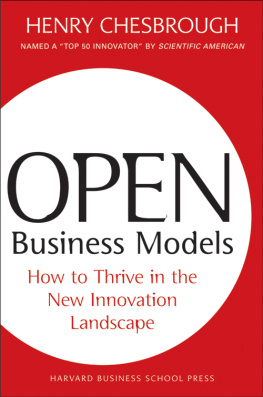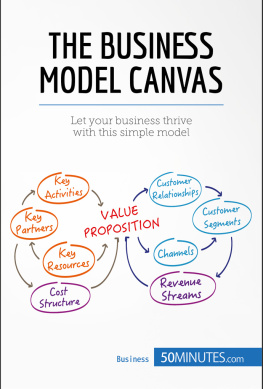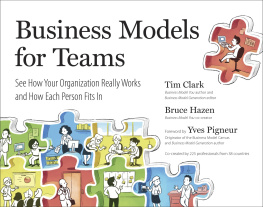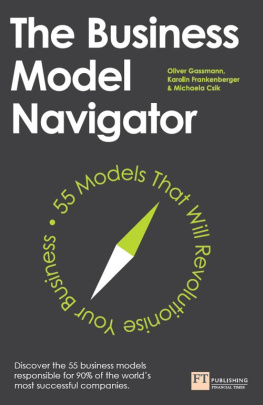Chapter 1
Don't Get Netflixed: Your Current Business Model Isn't Going to Last Much Longer
The nuclear industry measures how long a radioactive material will retain its potency by its half-life, which is the time it takes for the material to lose half of its radioactivity. For instance, the half-life of Uranium-235 is 700 million years. No wonder nuclear proliferation is so feared! During the industrial era the half-life of a business model has been measured in generations. Business models have always lasted a long time. Business models rarely changed and were handed down from generation to generation. Most business leaders have never had to change their business model. Most CEOs have led a single business model throughout their entire career. They never learned how to change a business model in business school or from their peers, who also have never had to change their business models.
During the industrial era once the basic rules for how a company creates, delivers, and captures value were established they became etched in stone, fortified by functional silos, and sustained by reinforcing company cultures. All of a company's DNA, energy, and resources were focused on scaling the business model and beating back competition attempting to do a better job executing the same business model. Companies with nearly identical business models slugged it out for market share within well-defined industry sectors. There was a mad rush to copy so-called best practices in order to not be left behind by industry leaders.
It should be no surprise that if you ask executives and corporate employees to define the term business model and to share their company's business model story you tend to get a lot of blank stares and very different stories from across the organization. For most, their business model has probably been in place since the business was startedbefore most employees joined the company. It hasn't changed. It is implicit. No one talks about it. No one shares business model stories because they are taken for granted.
Industry definitions are also taken for granted. As if industries were clubs with exclusive admission criteria and secret handshakes only revealed to companies that agree to play by understood rules. The industrial era has been defined by clearly delineated industries, making it easy to identify which sector every company is competing in. It was all so gentlemanly, as if competition was governed like boxing by a code of generally accepted Marquess of Queensberry rules. Companies were all conveniently assigned a numerical Standard Industrial Classification (SIC) code (now North American Industry Classification System, or NAICS) identifying which industry sector they fit into. Within each industry sector companies all migrated toward an identical business model competing for market share within the sector. Business models rarely changed.
Those days are over. The industrial era is not coming back. The half-life of a business model is declining. Business models just don't last as long as they used to. In the twenty-first century business leaders are unlikely to manage a single business model for an entire career. Business leaders are unlikely to hand down their businesses to the next generation of leaders with the same business model they inherited from the generation before. Leaders are either going to learn how to change their business models while pedaling the bicycle of the current one or they are going to be netflixed. The challenge in the twenty-first century for all leaders is how to avoid being netflixed.
If netflixed isn't a verb it should be.
netflix; netflixed
verb
to cause disruption or turmoil to an existing business model
to destroy a previously successful business model
to displace the way value is currently created, delivered, and captured
to be disrupted, destroyed, or displaced by a new business model
Blockbuster Gets Netflixed
Blockbuster started out with a compelling business model. Its value proposition was clearenabling consumers to watch hit movies in the comfort of their homes. Blockbuster established an extensive value delivery network with stores conveniently located on every corner. Its first store opened in 1985 and it quickly grew to have over 5,000 retail outlets and 60,000 employees. It also had a smart financing model to capture value. It rented hit movies at a price consumers found attractive relative to the price of going out to the movies. Instead of paying a large upfront fee to buy videos from the studio (up to $65 per video) Blockbuster entered into a revenue-sharing model with the movie studios including little to no upfront costs per video, which gave them a huge advantage, and fueled explosive growth. Blockbuster started out on a roll. At its peak in 2002 Blockbuster's market cap rose to $5 billion. In 2010 it filed for bankruptcy. So what happened? Blockbuster was netflixed.
It wasn't as if Blockbuster didn't see Netflix coming. They were just so committed to their bricks and mortar business model they couldn't see or act beyond it. They were stuck in their business model. It became a straitjacket that eventually took the company down. You didn't have to be a fly on the wall of Blockbuster's headquarters during those years to imagine the management debate that took place on what to do about the emerging competitive upstart, Netflix.
As is often the case, the Blockbuster business model story starts and ends with technology playing a leading role. Initially, technology enabled and then ultimately disrupted Blockbuster's business model.
Early versions of the videocassette recorder (VCR) first appeared in the late 1950s and through the 1960s, but it wasn't until the late 1970s that they began to have any mass consumer market success. Who doesn't remember the great format war between Sony's Betamax and JVC's VHS competing videocassette standards? VHS won out due to a longer two-hour recording time with the ability to extend the recording time up to four hours. The last obstacle to broad consumer uptake of VCRs was overcoming the resistance of movie studios. Like any industry facing a business model threat, whether real or imagined, the movie industry fought hard to block the spread of VCR technology. Jack Valenti, head of the Motion Picture Association of America, implored Congress to protect the movie industry from the savagery and the ravages of this machine. In Congressional testimony Valenti said, the VCR is to the American film producer and the American public as the Boston strangler is to the woman home alone. The case went all the way to the Supreme Court ruling in Sony Corp. of America v. Universal City Studios, Inc. that VCRs were allowable for private use. Ironically the movie industry ended up finding a significant new revenue source by distributing video recordings of their movies.
With consumer acceptance of VCRs expanding after the favorable Supreme Court ruling in 1984, Blockbuster opened its first store on October 1985 in Dallas, Texas, and never looked back, or over its shoulder, for that matter. Wayne Huizinga saw the potential to scale Blockbuster nationally, as he had previously done with garbage collection at Waste Management, and bought the company in 1987, starting with a few stores and quickly expanding through acquisitions and new store openings to become the largest retail video chain in the United States. In 1994 Huizinga sold Blockbuster to Viacom for $8.4 billion.
How smart was Huizinga, because in 1995 the DVD was invented. It was inevitable and easy to see. During the same period (in the late 1980s and early 1990s) that Blockbuster was capitalizing on consumer acceptance and demand for video recordings of hit movies, the demand for CD music recordings was also exploding. In 1982, Billy Joel's 52nd Street was the first record album released on CD in Japan, where Sony also launched its first CD player. In 1983 CD players were commercialized in the United States, along with 16 CDs released from CBS records. By 1988, 400 million CDs were manufactured in 50 plants around the world.
Next page








